I Began My Changes First at the Physical Level. I Discovered New Foods!
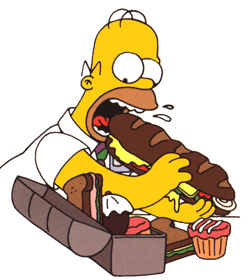
I followed the “see-food” diet—anything I saw I ate! At an early age I started using food as a comfort (a tranquilizer) for family problems. My overweight mother had been prescribed “speed” in order to lose weight in 1950. It worked very well but she became addicted to drugs. Then, as a head nurse at a hospital, she started taking patients’ medications. She also got addicted to alcohol and cigarettes. In 1950, there wasn’t the knowledge and support to help a person change that we have available today. My mother’s patterns had a dramatic effect on the whole family.
Roots of My Emotional Eating

My parents loved us dearly and without their kindness I wouldn’t be alive today, although multiple addictions wreaked havoc on our home life. When I was a little child, I loved many things: nature, swimming, games, and relationships with lots of friends. Then the swarms of negative life experiences started—constant fighting and discord at home; mother was ill, physically and emotionally; father was gone. When he was home, he was overbearing and had high expectations. Instead of one of closeness and harmony, my parents’ relationship erupted into many fights. I remember being in my room with the door closed, hearing my parents’ angry screaming and I would cry. I felt so sad and helpless; so sad that they couldn’t get along, so helpless that I couldn’t do anything about it. My mommy and daddy seemed to dislike each other so much.
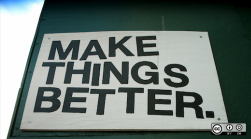
Food consumption was always a soothing experience for me; it would "make it all better,” at least for a little while. However, as my food consumption increased, so did my size. I started to become different from everyone else. Between the ages of 8 to 15, I began to get FAT. At school, messages of not being OK, of needing to perform and being rejected for who I was, of not being played with and being made fun of, “Fatty, fatty 2 by 4, can’t get through the bathroom door!” So I withdrew into the cocoon of food and gained more weight. I yearned to get out of my cocoon, but how? To resolve emotional eating, search through Essential Skills #8--Transforming Emotional Eating.
My food habits were always extreme: bags of potato chips, quarts of pop, six candy bars at a time, "Wholesome" Hostess products, whole pizzas, HUGE portions at all-you-can-eat restaurants, quarts of ice cream, and hundreds of other food items. As if that weren’t enough, my two grandmothers were wonderful cooks. I was ALWAYS eating--except at breakfast! I would eat so much before going to bed that I was never hungry for breakfast. I tried to lose weight and stop overeating on several occasions, but without any success. By the age of 13, I just gave up and knew I would be fat forever!

I Began to Make Changes
In 1969, when America landed on the moon, I started my weight loss at the age of 19 as an exchange student to Costa Rica, but it was an unpleasant way to go about it: I had diarrhea for several months! Even though I lost fifty pounds, I wouldn't recommend that method!
I started a more conventional weight-loss program in May 1972 when I joined Weight Watchers. I lost 118 pounds in seven months. They taught me what to eat and how to cook low-calorie meals. I now understand that they helped me with ONE of the roots of my being overweight, my cooking habits. Previously my cooking repertoire had consisted of Hamburger Helper and fried potatoes. Through Weight Watchers’ program I received fantastic moral support.

I'm SO glad that I learned the skills of setting up my environment (home and work) to support my success, and learning how to fix quick and delicious meals and snacks in the midst of a busy day.
Check out the Essential Skills section #5 & #6 for thoughts about setting up a sustainable and enjoyable plan of eating and ideas for yummy breakfasts, lunches, dinners and snacks. I learned to have FUN learning new ways to eat. Frolic around CELEBRATE Healthful Eating! Yum! Make It FUN. Make It Colorful!
I also received positive encouragement from friends and co-workers--this was a new experience for me. People commented about my weight loss and gave feedback about how much better I was looking. They asked me what I was doing. I shared with them new recipes and cooking and shopping strategies. To finally be successful felt so good.

In the 10 months in the program, I learned to apply a foundation food plan—one that taught me reasonable portion sizes and practical ways to apply the plan using delicious recipes. I was amazed I could eat such yummy food and still lose weight. I did not feel deprived and actually enjoyed myself. It was fun to learn about healthful kitchen management skills and ways to set up my environment to support my success.
I planned menus for the first 7 months, and my mother helped me learn how to cook. I am so glad I spent the time learning these skills because this is the eating program I still follow for over 45 years later. If I hadn’t learned about all of these things, I would have gained all of the weight back. Many of the tools, tips and ideas that I have learned are shared in the my Web site and in the resources that I share.
Learning About Myself--Exploring Other Factors...
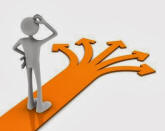
However, soon after I had lost the weight, my old, compulsive food patterns started to return. I binged on lots of desserts and sweets and found myself out-of-control, unable to stop overeating. I was very confused. I had gained back about 15 pounds. I was still following my foundation food plan, but I really started to learn that there are foods “that really arouse me, really turn me on.” When I eat them, I have an extremely difficult time eating them moderately. Foods like Snickers or Butter Fingers candy bars, brownies, cakes, pies, cookies, ice cream and barbeque potato chips. Remember the TV commercial: “Bet you can’t eat just one?” Well, I couldn’t. I’d seem to go into a food trance and eat one after another, after another, after another until I’d feel quite numb and sick.
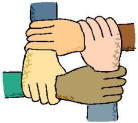
A
friend suggested I attend a spiritual support group, a group that focused on the
WHY of overeating; on looking at the reasons people overeat, not just at the
WHAT people eat. Following my friend’s advice, I began to examine and heal the
inner and outer relationships that I had. Delve into sections about
12-Step programs and
also EXPLORE:
The World Of Craving and Addiction Offers Me Nothing That
I Want. Good Bye!
Over time I learned to become my own honest and gentle observer. I noticed what worked, and I noticed what didn't work! I became willing to avoid my problem (binge) foods one day at a time. This took a LOT of practice. Certain foods seemed to have strong magnetic power over me, like SUPER-CRUNCH PEANUT BUTTER.

The Peanut Butter Story
I tried over and over again to eat it moderately. Promising myself I would have just a small amount of it, I would find myself getting the jar out of the cupboard, putting the spoon in it and end up eating half of the jar! On one occasion I mixed so much honey and raisins with it, and ate so much of it, I went into uncontrollable convulsions. There I was, lying on my bed convulsing, while reminding myself, “Bob, you did this to you. No one else did this to you. You did this to yourself. Do you see the effects on your physical well-being because of your relationship with peanut butter?”
To this day, 25 years later, I don’t bring peanut butter into the house—at least rarely. Perhaps about one time a year, I get a small jar of peanut butter and take a LARGE serving and then immediately throw away the rest of the jar (or else generously offer it to my companion, provided he hides it in his room so I can’t find it!).
I also found an alternative that works for me. I keep salted peanuts in the basement and find that I can eat them reasonably. I don’t bring the peanuts upstairs, within arms reach. I have to go down to the basement and get a single serving and bring it upstairs to eat, mixing them with some raisins in a small container to make them special. I even share them with my companion. I make that agreement with myself because I know my limitations.

To figure out which foods were problematic, which ones I could eat regularly and really enjoy, and which ones were in the “gray area,” that is foods with boundaries, took LOTS of practice. I discovered that in some situations I could handle certain foods, and in other situations I couldn’t. Investigate the The Ovals--Developing a "Personal Plan of Eating" section for an explanation of how to figure this all out.
Bob's Priceless Discovery! Discover How to Write Away Weight by Keeping a Food Journal.
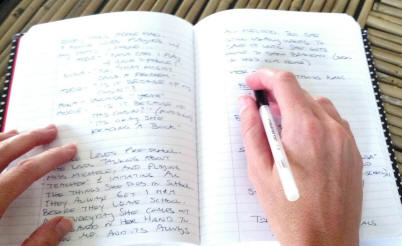
To help me change my life, I reached out to friends and other supportive people in the spiritual support group. I wrote my program foods in a diary and called a friend and told her what I was doing. I let her know when I needed to make changes. I also worked with a counselor.
To this day, I don't bring problem foods INTO the house. I set up a no-fail environment. I came up with this guideline because of what my food journals showed me. I discovered I could resist anything except temptation! I’m NOT a saint. I’ve learned about my abilities and strengths and I honor my limitations. I will go out to a fine deli or restaurant to get a single-serving of desserts or other items (rather than keep a whole cake or gallon of ice cream at home). It gives permission to me to have the food, and respects my natural tendencies to overeat certain types of foods. I've seen this technique work for many people--it is having foods with boundaries. Explore Bob's Healthy Kitchen, What's In It? for ideas.

MY CARDINAL RULE: IN house, IN sight, IN mind, IN MOUTH! I keep the refrigerator/cupboards stocked with LOTS of healthful foods. I BRING them with me to work and times of play in a food bag—I'm willing to go to any length because I have the DIS-EASE of compulsive overeating. I kept hoping that healthful foods would just fall out of the sky for me, but that didn’t happen! This one tool, my food bag, helps me eat whenever I’m hungry and to stop when I’m just satisfied. I’ve used this tool for 24 years. For ideas about what I might eat, see What Does Bob Typically Eat In Any Given Day?.
Even though I can see the value of this now, it took me quite awhile to be willing to bring foods with me. In 1978 I had just graduated school in dietetics and was working on a new job as a food service supervisor in a hospital kitchen. The kitchen had a wonderful bakery and it was my job to sample the foods before they were sent up to the patients. I could have all of the food that I wanted. Since I could sample the foods for free, I didn’t bring my meals and snacks along with me.

As my diaries showed, on many occasions, one bite led to another: On one Wednesday evening: “I was fighting the desire for sweets all day until 4:30 pm when I tasted 1 cookie in the bakery à 4 more à 4 brownies à 2 cookies à 2 chocolate milks à 10 raw cookie dough balls à 2 candy bars as I went out the door. Oops, I did it again. I need help.” And later in that week on Saturday evening: “I was tired so I ate 5 pieces of pecan pie from tray line. I told myself I was tired and the pie would give me energy. It didn’t!”
I went through countless experiments like this until I realized at a deep level that free food comes with a profound cost to me. I could, at last, see the value of bringing a food bag along with a variety of snacks and foods for mealtime. I clearly saw it would be best NOT to sample all of the foods in the kitchen.
I ultimately decided to work in the diet office and to get out of the kitchen because that environment is too stimulating for me.